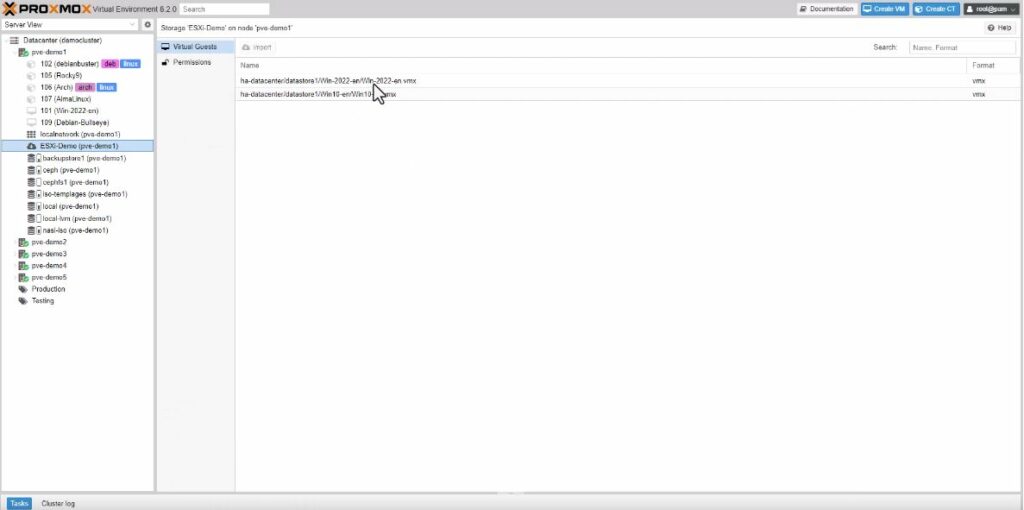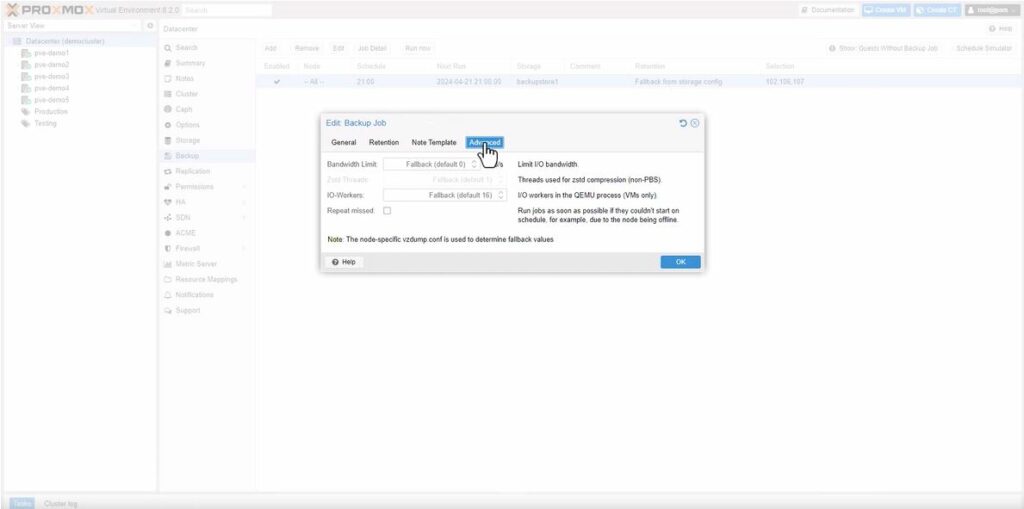Proxmox Server Solutions has released the latest update to their server virtualization management platform, Proxmox VE 8.2.
Proxmox Server Solutions has released the latest update to their server virtualization management platform, Proxmox VE 8.2. The new version is based on Debian 12.5 (Bookworm) and upgrades to Linux kernel 6.8, including updates to major components like QEMU 8.1, LXC 6.0, Ceph 18.2, and ZFS 2.2. Building on the previous version 8.1, this update introduces an import wizard for VMware ESXi VMs, enhanced backup configurations, and several user interface improvements, marking significant advancements in the platform’s capabilities and user experience.
Proxmox VE 8.2 Features
The new import wizard in Proxmox Virtual Environment 8.2 significantly simplifies the process of moving VMs from VMware ESXi to Proxmox VE. This feature allows users to connect to VMware using its public APIs and directly transfer VMs into the Proxmox environment and preserves most of the original VM configurations during the migration, the latter of which helps maintain system consistency and reduces setup time.
Integrated seamlessly into both the Proxmox API and its web-based user interface, the wizard also streamlines the transition from VMware and potentially other hypervisors in future updates. It can initiate VMs on Proxmox VE while their data continues to be imported in the background, thus minimizing downtime and enhancing the efficiency of the migration process. This capability is particularly valuable in enterprise settings where reducing operational disruptions during migrations is critical.

Another major advancement is the ‘proxmox-auto-install-assistant’, which automates the installation process on bare-metal servers. This feature is designed to enable rapid deployment without manual intervention, potentially saving time and minimizing the risk of errors. The installation can be customized using an ‘answer file’ provided through various means, including direct inclusion in the ISO, via a USB drive, or over a network.
Version 8.2 also introduces a backup fleecing feature that aims to mitigate the impact on VM performance during backup operations. This technology works by caching data blocks temporarily, which helps maintain guest IO performance and prevents system hangs during backups to slow storage solutions.
In addition, Proxmox VE 8.2 begins the transition from iptables to nftables for its firewall solutions, implemented in the Rust programming language. This change is currently available as a technology preview and must be manually enabled.
Additional enhancements include:
- Device Passthrough for Containers via GUI: Building upon the existing support for LXC device passthrough in the API and CLI interfaces, version 8.2 introduces GUI configuration capabilities. This addition allows for more intuitive management of device passthrough settings directly through the GUI.
- Advanced Backup Settings: The update improves the backup functionality with advanced settings, allowing administrators to fine-tune performance and set bandwidth limits. These enhancements aim to provide greater control over backup processes, optimizing them for different network and server environments.
- Custom ACME Directories/Providers: Proxmox now supports custom ACME-enabled Certificate Authorities (CAs), including those that require External Account Binding (EAB) for authentication. This feature expands security options, allowing users to integrate more flexible and secure certificate management practices within their environments.
- GUI Enhancements: The Proxmox team has made several user interface improvements to streamline operations and reduce errors. Most notably, the double-click editing option in the notes field has been disabled to prevent accidental text modifications during selection. Additionally, the reset button on edit screens has been relocated to minimize the likelihood of unintended resets.
Proxmox VE 8.2 Availability
Proxmox VE 8.2 is available for download from the Proxmox website and can be installed directly on Debian systems or on bare-metal hardware using the provided ISO. This release allows for seamless distribution upgrades from older versions through the apt package manager.
Engage with StorageReview
Newsletter | YouTube | Podcast iTunes/Spotify | Instagram | Twitter | TikTok | RSS Feed

